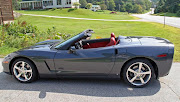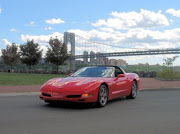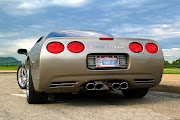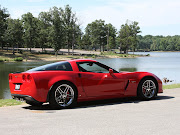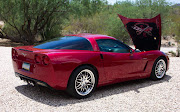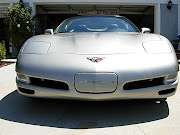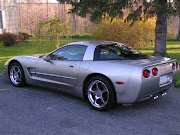
At some point in your Corvette experience, you're going to need to find out what type of error occurred in your engine that caused your "Check Engine" light to come on.
It could something as simple as a loose fuel cap, or it may be something more serious that needs attention. In case that's happened to you, here's an easy way to see where the problem originated.
In the center of your instrument panel, below the speedometer and tach, there is a horizontal readout that comes one when you start the car. It usually begins with the word "CORVETTE" and then changes to "BY CHEVROLET." This is what is referred to as your DIC, or Digital Information Center.
Turn the ignition key on, but don't start the car. Hold down the
OPTIONS button and press the
FUEL button four times. You're now in
DIAGNOSTIC MODE.
The computer will display what are referred to as DTCs or Diagnostic Trouble Codes. There are two kinds of DTCs, "Current" and "History," designated with a letter suffix, "C" or "H". A current code indicates that the malfunction is present in the system whose module is displaying data. A history code indicates a problem existed in that module sometime in the last 40 or 50 ignition cycles. When not accompanied by a current code of the same number, it is possible it's evidence of a previous problem, now solved, that was not removed by clearing codes. More likely is that a history code indicates an intermittent malfunction. "Intermittents" are the most challenging DTCs. An intermittent may have happened only once, may have happened more than once but is inconsistent in its appearance or may be happening on a regular basis but not at the time the IPC is displaying codes.
History codes can also be caused by a current malfunction in a system that is not operating at the time DTCs are displayed. An example is the rear window defogger which doesn¹t operate until the BCM detects engine rpm. For history codes set by a system that does not operate with the key on and engine off, a special diagnostic tool called a "scan tester" is necessary to properly diagnose the malfunction.
Inititially, the on-board diagnostics go into the "automatic" mode which shows each module's DTCs in a pre-set sequence:
10 PCM Powertrain Control Module
28 TCS Traction Control system ABS
?? RTD Real Time damping
40 BCM Body Control Module
60 IPC Instrument Panel Cluster
80 radio
99 HVAC Heater Vent-Air Conditioning
A0 LDCM Left Door Control module
A1 RDCM Right Door Control Module
AC SCM Seat Control module
B0 RFA Remote Function Actuation
For each module, all DTCs will be displayed. If none are present in a module, you will see "no more codes" on the ICP display.
Once the IPC has displayed all 11 modules, the system goes into the manual mode which allows selection of each module using combinations of DIC buttons. The manual mode can also be entered at any time during the automatic sequence by pressing any button except "E/M". Once the IPC displays "manual diagnostics," you may select a particular module by pressing the "options" button to go forward or the "trip" button to go back. Once a system is selected and a DTC is displayed, if more than one are present; press "gages" to move forward or "fuel" to go back.
To exit the diagnostic mode at any time, press "E/M". If you want to erase or "clear" codes, press "reset." Clearing a code does not repair a problem. You are simply erasing the evidence of it in the module's memory.
So, now that you have the codes, what do they mean? Rather than list them all here, I'm going to refer you to another site. This site provides a great listing of all the error codes you may encounter.
http://www.stengel.net/diccodes.htm.
Hope that helps.






























